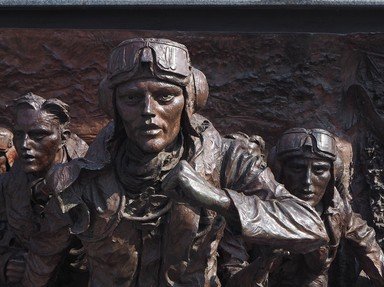15. How many fighter aircraft did the Royal Air Force have at its disposal at the beginning of the Battle of Britain (July 1940)?
From Quiz The Battle of Britain
Answer:
754 single-seat fighters and 149 two-seat fighters
At 0900 on 1st July 1940, an RAF census count confirmed a total of 1,963 planes at their disposal. The German air force, the Luftwaffe, had a total 4,074 planes, of which 2,242 could be used in an aggressive role (fighters and bombers).
The Luftwaffe had more planes, more pilots (and more experienced pilots), greater industrial potential and had momentum from the Battle of France. However, they could not break the British spirit despite their continuously heavy raids. Source:
* Stephen Bungay, "The Most Dangerous Enemy", Aurum Press, 2000, p. 107.
* Battles of WWII, pp. 27-28.







